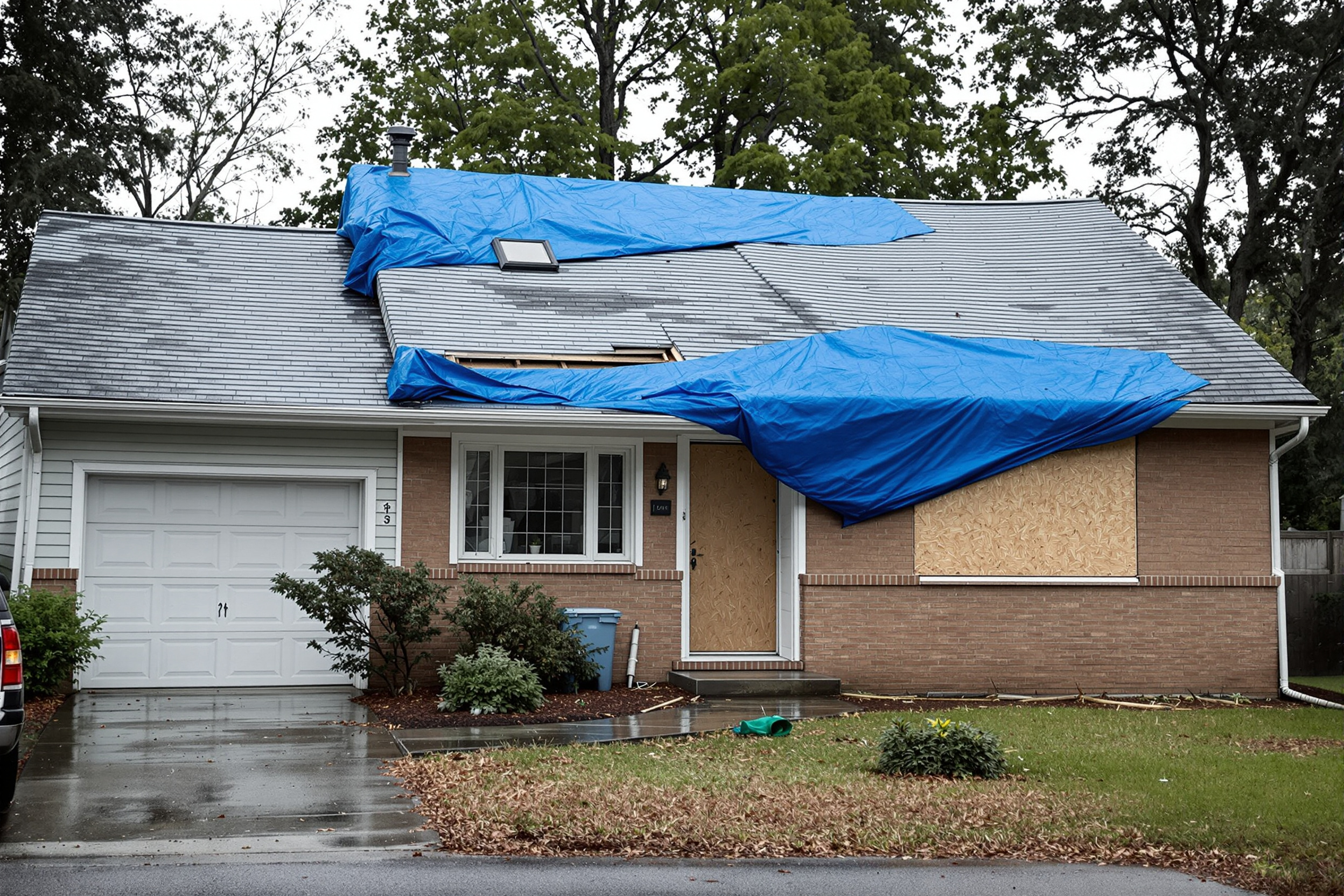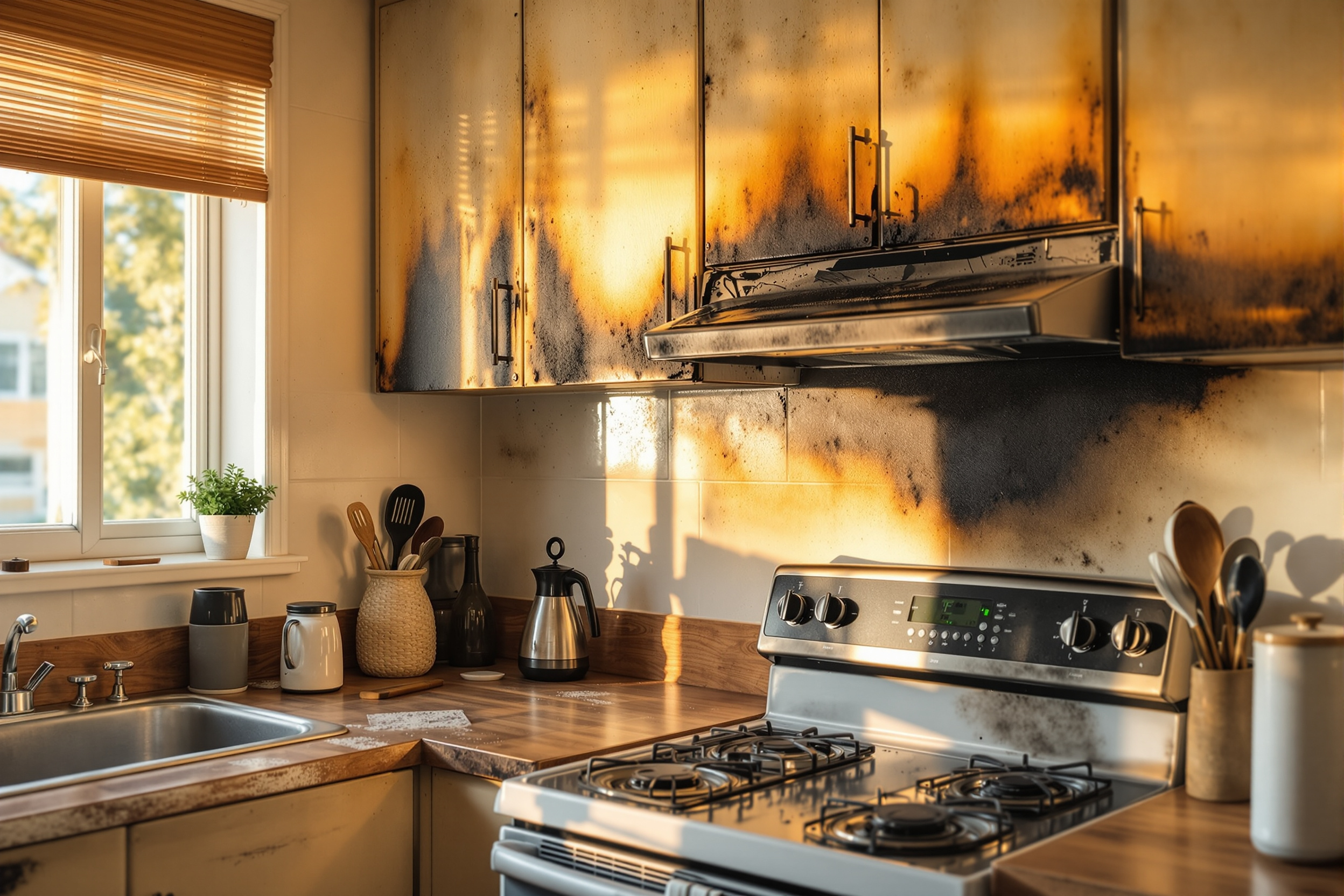The largest hailstone on record fell in June 2010 in Vivian, SD. It had an 8-inch diameter, weighed nearly two pounds, and left a hole in the ground the size of a coffee can.
Most hailstones aren’t nearly that large. But even smaller hailstones can cause significant damage to your property. As a landlord, it’s critical to understand the hail risk in your area and make sure you have the appropriate insurance coverage to protect your investment.
In this guide, we’ll cover the U.S. States that get the most hail, the kind of damage that occurs, and how much it can cost to repair. We’ll also answer your questions on coverage for hail claims.
A Quick Refresher on Hail
If you don’t live in a high-hail-risk area, you may not have thought about hail since middle school science class. Even if you have experienced hail storms, you might not know how hail forms, or why it’s so destructive. So here are the basics:
Hailstones are created when raindrops are caught in an updraft during a storm and move quickly into an area where the temperature is extremely cold. The raindrops freeze and also start to attract condensation from the surrounding water in the storm clouds. Depending on how fast water freezes onto a hailstone, it can appear cloudy or clear. As more and more droplets latch onto a hailstone in layers, it eventually becomes too heavy for the updraft to hold, and falls to the ground.
A small hailstone (<1 inch in diameter) can fall at up to 25 mph. The bigger the hailstone, the faster it falls. The largest hailstones in most storms are between two and four inches in diameter and can fall as fast as 72 mph according to the NOAA National Severe Storms Laboratory.
To put that in perspective, imagine a golf ball flying towards your roof at the speed of your car on a highway. With that in mind, it’s no surprise that hail can wreak havoc on houses.
Where Hail Damage Happens Most
While hail storms can happen just about anywhere, the highest incidence of hail damage is found in the Southwest and Midwest of the United States. In fact, the area where Nebraska, Colorado, and Wyoming meet has such frequent storms that it’s been dubbed “hail alley.”
In 2022, NOAA’s National Weather Service indicated that these five states had the highest number of hail reports:
- Texas: 458 hail reports
- Nebraska: 399 hail reports
- Minnesota: 387 hail reports
- Kansas: 289 hail reports
- South Dakota: 275 hail reports
Interestingly, when you look at insurance claims for hail damage, the list changes a bit. From 2018-2020, the National Insurance Crime Bureau counted these states as the most at-risk for hail damage claims:
- Texas: 605,866 claims
- Colorado: 312,808 claims
- Illinois: 150,970 claims
- Missouri: 139,288 claims
- Minnesota: 137,330 claims
Other high-risk states include North Dakota and Oklahoma. You can take a look at the hail risk map below for an overview of regional risk, or use the FEMA National Risk Index interactive map to get more details.

When to Expect Hailstorms
Across all these regions, the hail storm season is fairly similar. Typically, hail storms ramp up in the early spring, peak in May and June, and then decrease in frequency through October. Despite colder weather and more snow, hail is actually the least likely to be reported during the winter months!
Common Types of Hail Damage to Homes
Hail damage is typically to the exterior of a property. The most prevalent damage claims are for roofs and siding, though windows and doors are also at risk of hail storm damage. Common damages include:
- Falling hail can damage your roof’s shingles or create holes in your roof that could let in critters and mold-creating moisture.
- Severe storms can toss hail at various angles, leading to dents and cracks in vinyl siding.
- The impact of hail on windows can cause cracks or break the glass entirely. It can also damage the seal protecting double-pane windows, letting in moisture and diminishing your property’s insulation.
- Steel gutters are resistant to hail damage, but aluminum and copper gutters can be prone to punctures or cracks from larger hail stones.
- Generally, solar panels are made to endure a variety of weather conditions, including hail. That said, large hailstones or a series of impacts over time could lead to solar panel damage.
How Much Hail Damage Costs to Repair
Like hail risk, the cost of hail damage repair cost varies from state to state, and even city to city. Repair costs are also heavily influenced by inflation and the cost of building materials and labor. In 2021, the NOAA reported that hail storms caused more than $1 billion in damage to property and another $38 million in damage to crops.
The cost to repair hail damage to your property also depends on the type and scope of the damage. While replacing a small area of shingles may cost less than a few hundred dollars, a full roof replacement can cost upwards of $10,000. To protect yourself, you’ll need to understand both the average repair costs for your area and the replacement cost value of your roof, siding, and gutters.
The Hail Claim Filing Process
If your property sustains hail damage, the first thing to do is document the evidence. Take photos and videos of the impacted areas of your home. Measure any holes and take note of the area of impact/number of damages. Also, be sure to include documentation of any personal property damage or injuries on your property caused by hail.
You’ll then need to:
- Contact your landlord insurance company and speak to an insurance agent about your situation.
- If you’re already an Obie customer, call +1 (773) 820-7132 for assistance.
- File a hail damage claim to formally ask your insurance to pay for hail-related repairs.
- Make an appointment with an insurance adjuster to assess the damage. They’ll handle the claim in accordance with your policy.
- Choose a service provider to complete the repairs. If your insurance agent is local, they’ll likely have a list of recommended providers.
Does Home Insurance Cover Hail Damage?
Like most coverage questions in insurance, the answer is: sometimes. Depending on your insurance carrier and specific policy, your wind and hail coverage can vary greatly. You’ll want to make sure you’re aware not only of the amount of coverage your policy includes, but also your deductible, and whether your provider covers damage in replacement cost value (RCV) or actual cash value (ACV).
In general, wind and hail coverage are part of rental dwelling coverage. Even if your base insurance contract does not include coverage for wind and hail, you may be able to purchase an endorsement, or add-on policy, to protect your property.
One question most policyholders have about damage claims is whether or not they’ll cause your insurance rates to increase. In some cases, filing a claim can impact your insurance premiums, as well as renewal eligibility. That said, the average insurance payout for hail damage can be significant. Remember that you insured your rental property to protect against damages like hail, and consider the cost of a rate increase against the cost of handling those repairs out of pocket.
Hail Damage Insurance for Landlords
While not every landlord insurance policy will include wind and hail coverage up front, many lenders will require you to have this coverage if you live in a high-risk area. It’s important that your policy meets all lender requirements while also providing you with excellent service and reasonable costs.
At Obie, we make it easy to obtain compliant, comprehensive insurance coverage, including wind and hail coverage standard in most policies. We also cover a wide range of other natural disaster risks like fires. Getting started is simple: just fill out a quote request and discover the best policy for your property.







